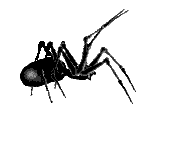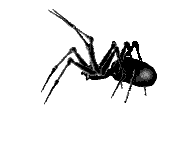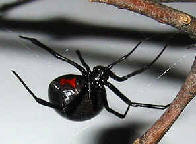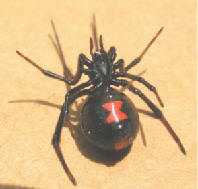 Black
Widow Spider
Black
Widow Spider
|
Black widows are by far the most
common poisonous spider bite in the United States. Black Widow Spiders are
most common in the tropics and the Southern United States, but have been
reported as far north as Canada. They spin an irregular web in crevices
and dark places.
Other widow
spiders are the Redback, native to Australia and considered one of their
most dangerous spiders, and the Katipo,
an endangered, venomous
spider native to
They have long legs and dark, black bodies. The female is the poisonous one, the male is smaller with no marking and harmless. The female's distinctive marking is a red hourglass shape on her abdomen. This can also be seen as two separate red spots. They are approximately 1cm long, but vary. The venom of a widow spider is said to be 15 times more poisonous than a rattlesnake. Often a person is bitten when reaching underneath or behind something. Always use caution when cleaning old dark places. Turn things over with something else. When bitten, sometimes the initial bite is painless. Pain maximizes about 1 to 3 hours after the bite. There is local pain and swelling, perhaps redness. The venom causes muscle cramping. So there will also probably be some cramping, and possibly nausea and vomiting. There can also be difficulty breathing. Widow bites can even be fatal, however less than one percent of these bites result in death. Children under thirty pounds are most at risk. When bitten you must seek medical attention. At home, you can apply an ice pack and some alcohol or peroxide before going to the hospital. |



